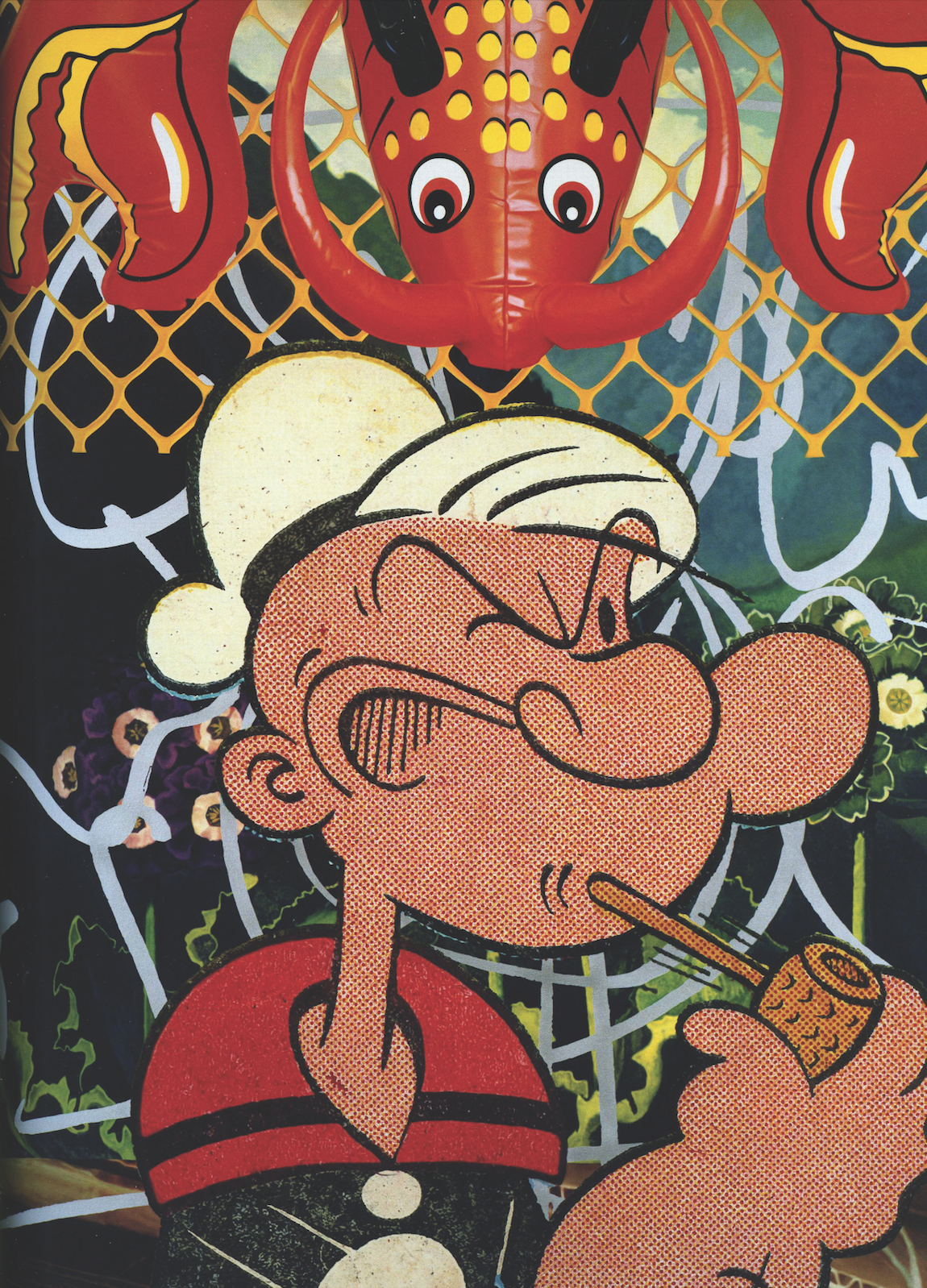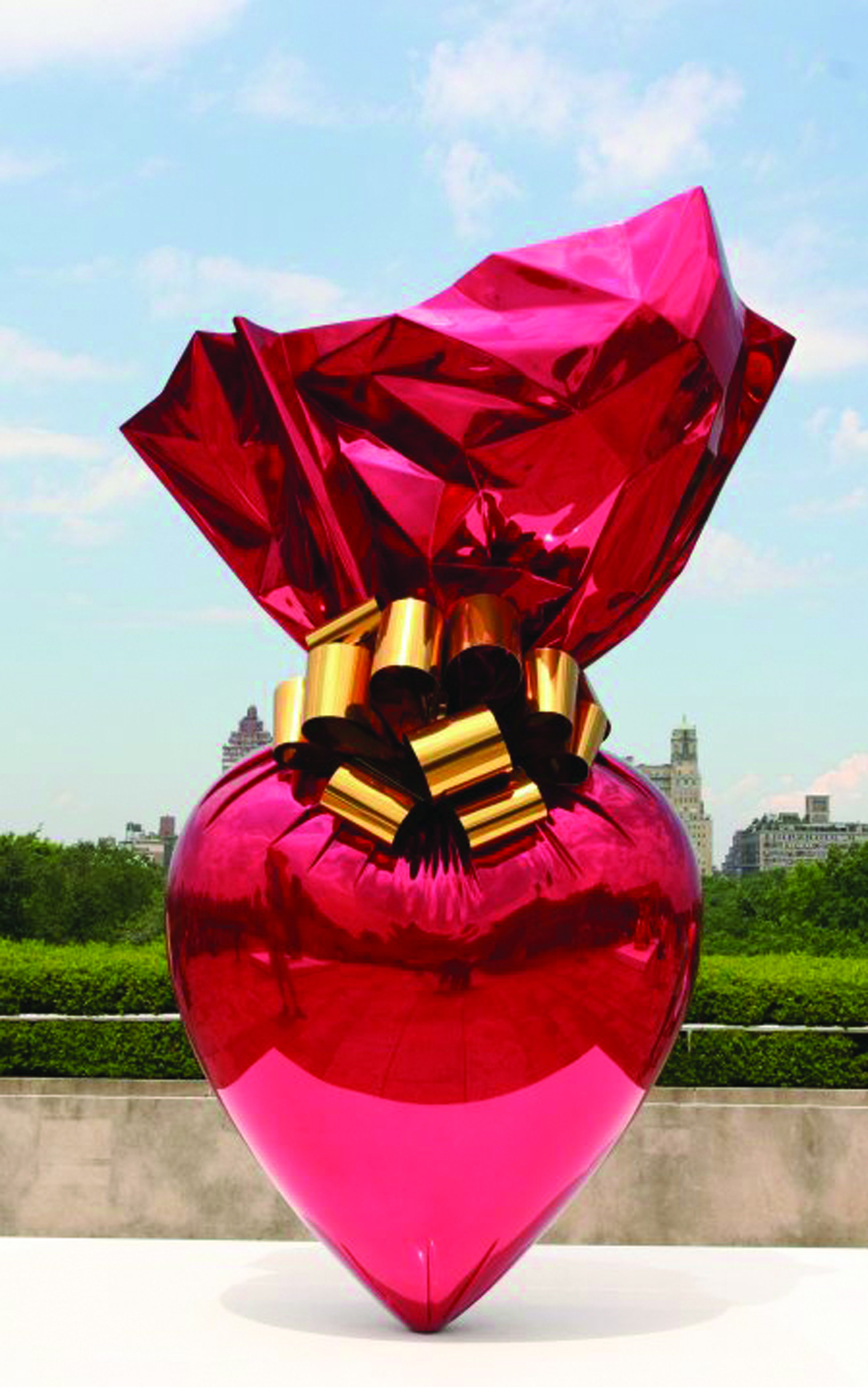FEATURE: JEFF KOONS - KING OF KITSCH
KING OF KITSCH
Jeff koons was asked to exhibit at the Versailles Palace last year. he could not have been offered a better venue for his first european retrospective: the ultimate baroque french palace for america’s king of kitsch. Visitors were able to admire fifteen of koons’ trademark works, including sculptures of a giant red lobster and Michael Jackson hugging his pet chimp bubbles, amidst the usual curly-curvy furniture and portraits of Louis XiV and Marie antoinette.
“A viewer might at first see irony in my work, but I see none at all.”
koons defined the Versailles show as the absolute highlight of his career, yet not everyone shared his opinion. A group known as the national union of Writers of france protested outside the palace, calling koons and his work an insult to the artistic and cultural heritage of france.
Born in 1955, koons is one of the world’s bestselling and most controversial artists. While collectors pay millions of dollars for his sculptures, many critics accuse koons of being a media doll interested more in enhancing the fame and glory of his own persona, than that of his work. now, regardless of the question if his work is art or not (who cares, really), fact is that koons is hardly the artist who takes pride in solely living for the sake of art, no matter what: he has always been closely associated with money, and adores being part of America’s celebrity culture. early in his career, koons actually worked as a Wall street broker, while establishing himself as an artist. This enabled him, as soon as he received his first recognition, to open a factory-like studio in soho and, Warhol-like, employ a small army of assistants. Today, he has a similar studio in London with some 80 employees. Although he was a great admirer of dali, and painted surrealist paintings in his youth, these days he hardly touches a brush, but merely directs and supervises.
According to Arifa Akbar, a journalist who writes for The Independent, koons has always been very aware of “the business of doing art” and the power of Pr. If art, as some people claim, is but the next product in our consumer- driven society, then playing the media is an essential tool of marketing. Akbar claims that, years before koons became a household name, he hired an image consultant and paid for his own ads in international art magazines.
having said that, let us have a look at koons’ stormy career. his early works stem from the late 1970s and are mainly realistic reproductions of every day items, such as tea and coffee pots, hoovers, miniature cars and trucks, and a pair of basketballs floating in a water tank. he first hit it big with his Banality series in the late 1980s, which consists of porcelain statuettes of cult figures such as the Pink Panther and, most famously, a life-size gold-painted sculpture of Michael Jackson and his Bubbles. While most people, with the arguable exception of Jackson fans, would not want to have the thing in their living room, even if they were paid money on the side, sotheby’s new york sold the piece in 1991 for no less than $5.6 million. In the same year, koons married Ilona staller, better known as Cicciolina, a former porn star who, by regularly flashing her boobs in public, had managed to become an Italian MP. Together they were one of the weirdest and most media-hyped couples of the 20th century, not in the least thanks to koons himself, as he produced Made in heaven: a series of realistic photos, paintings and porcelain sculptures portraying him and his muse exhibiting sex positions with such “poetic” titles as: Jeff eating Ilona; Ilona on Top; Blow Job and Jeff on Top.
yet, the match made in heaven did not last very long, not did it end very well, as the two love birds soon filed for divorce. And some divorce it was! having agreed mutual custody for their son Ludwig, Cicciolina and her son ran off to rome. until this very day the former lovebirds fight over their offspring. In 1998, a us court granted koons sole custody, which failed to change the status quo, while Cicciolina in 2008 sued koons for having failed to pay child support.
despite these unfortunate hick-ups in his personal life, koons continued working, and successfully so. In 1992, he made Puppy, a 12-meter-high steel structure covered by flowering plants depicting a baby terrier. It is, in my opinion, one of his most beautiful and intelligent works, as he managed to create a sculpture that is able to change shape and colors according to the seasons – a sculpture that has come alive somehow. first made for an exhibition in Germany, Puppy today adorns a terrace outside the gorgeous Guggenheim museum in Bilbao. ever since, koons has made several similar flowering sculptures.
he continued in the 1990s with Celebration, a series of mainly highly polished, colorful, stainless sculptures of such things as balloon dogs, ribbons, party hats, diamonds and hanging hearts. sotheby’s new york in 2007 sold one of his enormous hanging hearts for $23.6 million, which was at that time the most expensive art work ever sold by a living artist, while Christie’s London in July 2008 sold one of his balloon flowers for $25.7 million. In the series easyfun-ethereal, koons seemed to return to his early years in which he painted surrealistic works. The oil-on-canvas paintings depict a mix of bikinis, food items and landscapes. The results are quite striking and look like collages of cut-up ads and commercials. In his most recent works, koons was mainly inspired by pool toys and cartoon characters such as the hulk and Popeye, the spinach-devouring sailorman. Although his work seems to contain a certain element of irony, koons has in several interviews insisted that his work has no hidden meanings. not even irony. “A viewer might at first see irony in my work, but I see none at all. Irony causes too much critical contemplation,” he once said. In other words: what you see is what you
get. And what you get is at times pretty in- the-face plain. Take his work called dogpool Ladder, which is a plastic dog pool impaled by a ladder. no need for further reflection, for it is exactly that: a plastic dog pool impaled by a ladder. koons rigorous refusal to intellectualize his work did not do him any favors with the critics. so, Mark stevens called him “decadent” and defined him as “another of those who serve the tacky rich.” Michael kimmelman in the new york Times claimed his work was the worst the 1980s have produced. robert hughes has often compared today’s art scene to that of showbizz, and thinks koons has become the undisputed star attraction.
hughes prose is as beautiful, as it is venomous: “koons is an extreme and self-satisfied manifestation of the sanctimony that attaches to big bucks. koons really does think he’s Michelangelo, and is not shy to say so. The significant thing is that there are collectors, especially in America, who believe it. he has the slimy assurance of a blow-dried Baptist selling swamp acres in florida. And the result is that you can’t imagine America’s singularly depraved culture without him.” hughes places koons just above seward Johnson, who gained fame with his realistic life-size statues of everyday people in everyday situations. Comparing their careers, hughes said, is “like debating the merits of dog excrement versus cat excrement.” Pro-koons critics however, will argue that he is but the natural continuation of Marcel duchamps and Andy Warhol. he is the man who took pop art one step beyond. now, that may be true, and some of koons’ work is definitely funny, as well as pleasing to the eye. yet, I wonder, how much did koons really add to the book of art, seeing the fact that duchamps exhibited his “readymades” (found objects exhibited as art) as early as 1913, while his infamous toilet (entitled “fountain”) stems from 1917.
But, whatever the war of words between the critics and art historians may be, koons has exhibited in every major museum on the planet, broke the Chicago Museum of Contemporary Art’s public attendance record with some 86,000 visitors, and was asked to decorate the Versailles Palace with giant balloon dogs and hanging hearts. now, if he did all that, he has got to be doing something right, right?
TEXT BY Peter Speetjens



